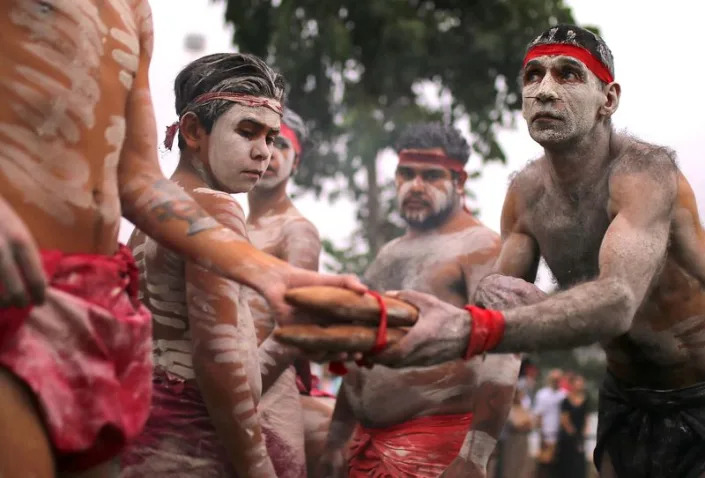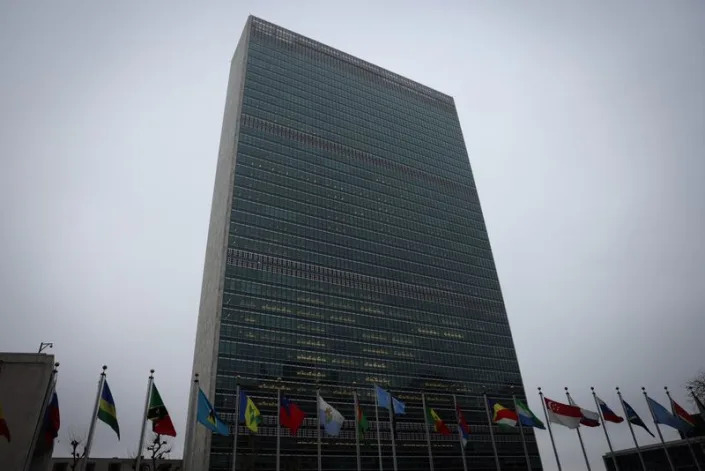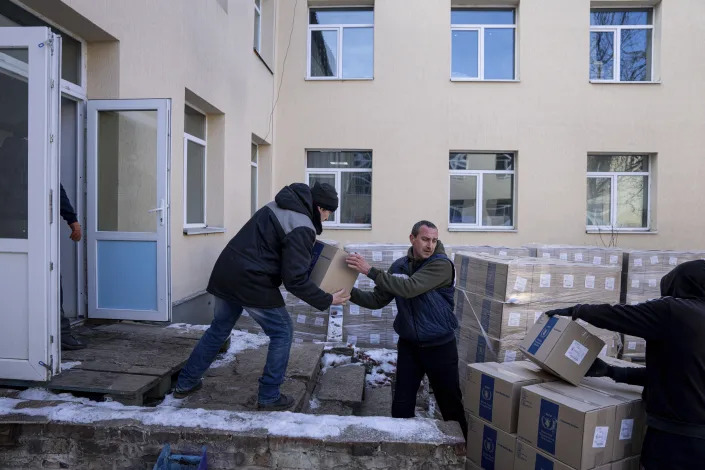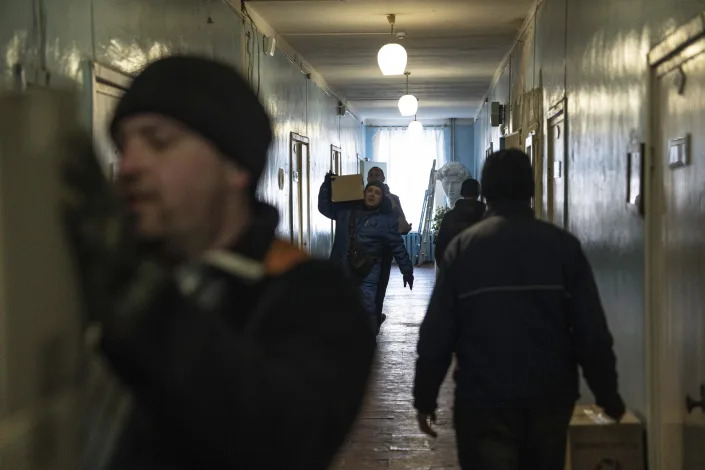Wealthy Americans skirt $160 billion a year in tax payment

Medora Lee, USA TODAY
Wed, February 22, 2023
More than $160 billion in tax revenue is lost every year because the top 1% finds ways to avoid paying “their fair share,” according to academic research cited by the Treasury Department.
What tactics, though, do uber-wealthy people use to avoid the taxes?
It turns out that not only can they afford tax attorneys, accountants, and estate planners, but there are also some tax benefits that require lots of money to even access. We’ll shed light on some of those strategies available only to the extremely rich.
“As long as it’s done legitimately and there’s no fraud, I’m okay with it,” said Ed Smith, senior tax and estate planner at Janney Montgomery Scott.
Tips from rich people on how to save: These are the tax strategies used by uber rich Americans
Important info: Are you ready to file your taxes? Here's everything you need to know to file taxes in 2023.
How much do rich people avoid in taxes?
According to U.S. Treasury estimates, the top 1% of wealthy people underpay their taxes by $163 billion annually.
How the super-rich avoid paying taxes
Foundations
Gifting
Family offices
Investments
Moving residency
1. Foundations: Some begin with as little as $250,000, but a more feasible amount begins in the millions.
Immediate income tax deduction of up to 30% of adjusted gross income (AGI) for your contribution but only distribute about 5% each year for charitable purposes. Because that 5% is calculated off the previous year’s assets, the first year requires no distribution.
Avoid high capital gains tax and grow money tax efficiently. You can deduct the full fair-market value of the stock you contribute and not pay capital gains tax. If the foundation sells, it only pays 1.39% excise tax on the capital gains.
Example: Investing $250,000 in a private foundation each year for five years, earning 8% annually, yields about $1.43 million after excise taxes and minimum annual distributions of 5% to charitable activities. Contrast this with $1.38 million had the money been invested in a taxable account and paid capital gains taxes along the way.
Building solid foundations: 'There are many paths': Some NFL players find efficient ways to give back
Famous tax return: What we know about the 6,000 pages of Trump tax returns, Republican response and more: recap
2. Gifting:
Annual gift tax exclusion. In 2022, the limit was $16,000 and in 2023, it’s $17,000 per person. “If you have three kids and 10 grandkids, times two (me and spouse), that’s $34,000 per year to all 13 people that’s out of your estate and a tax-free gift,” said David Handler, Trusts and Estates Practice Group partner at Kirkland & Ellis LLP.
Lifetime gift tax exclusion, which is separate from the annual gift. For 2023, it’s $12.92 million ($25.84 million for a married couple), and that amount generally rises each year based on inflation.
Note: The 2017 Tax Cuts and Jobs Act (TCJA) doubled the lifetime gift tax amount until December 31, 2025. The amount reverts to the pre-TCJA amount of $5 million, adjusted for inflation, unless Congress extends it.

Do you need to pay taxes on a gift?
3. Family office: Typically, you need at least $100 million in assets to create a single-family office.
If properly structured, it can offer personalized services that include investment management, financial planning, estate and tax planning, philanthropic investing, concierge services, and more for family members with all the tax deductions of a business. The TCJA stopped individual taxpayers from deducting investment, accounting, tax and similar advisory fees until 2025, but a family office might be able to take them.
“Big wealthy families have the capability to do this if they all agree and get along by making it a business and deducting what would be non-deductible,” said Smith.
Bonus: if your kids have skills that can be used in the family office or other business, you can hire them and pay them a hefty salary that’s expensed for the business and passed on to the kids, Smith said.
Family work: Family businesses: 8 rules for working with your relatives that will keep you on speaking terms
Nepo babies: Jamie Lee Curtis, 'OG Nepo Baby,' says the label is designed to 'diminish' and 'hurt'

4. Investments:
The average U.S. chief executive salary as of Jan. 26 was $812,100, according to Salary.com. How can that be when we always hear that CEOs earn millions per year?
In contrast to the lower 99% who earn most of their income from wages and salaries, the top 1% earn most of their income from investments. From work, they may receive deferred compensation, stock or stock options, and other benefits that aren't taxable right away. Outside of work, they have more investments that might generate interest, dividends, capital gains or rent if they own real estate.
Note: Real estate investments offer another benefit because they can be depreciated and deducted from federal income tax -- another tactic used by wealthy people.
Calculating income: What is income tax? What to know about how it works, different types and more
Real estate investing: Looking for new investment options? Here's what to know about real estate beyond homeownership
5. Changing residency:
“Jake Paul promoted it with a whole new section of the population,” said tax attorney Adam Brewer.
Professional boxer and American social media personalities Paul and his brother Logan, who is also an actor and wrestler, moved to Puerto Rico partly to avoid high American taxes.
Puerto Rico is particularly attractive because U.S. citizens who become bona fide Puerto Rican residents – simply relocating doesn’t count -- can keep their U.S. citizenship, avoid U.S. federal income tax on capital gains, including U.S.-source capital gains, and avoid paying any income tax on interest and dividends from Puerto Rican sources.
Normally, U.S. taxpayers would have to give up their U.S. citizenship or green card to reap federal tax benefits.
Taxing states: State taxes can be complex if you choose to work in a different state. Here's what to know.
Tax escape: Want to relocate? What to know about moving to Canada and Mexico
Not everyone’s ready to take that leap, though. ”A lot of people move to avoid state income tax,” Brewer said.
If you're a big earner, you could benefit from no income tax especially since the Tax Cuts and Jobs Act capped at $10,000 how much state and local taxes (SALT) you can deduct from your federal taxes through 2025. If Congress doesn’t act to keep this cap, SALT deductions will revert to unlimited.

States without income tax:
Alaska
Florida
Nevada
New Hampshire
South Dakota
Tennessee
Texas
Washington
Wyoming
Can we get rich people to pay more taxes?
These are just a handful of ways ultra-wealthy people can legally avoid taxes. Although President Joe Biden proposed a national wealth tax when he took office, that's gone nowhere and now some states are trying to impose their own.
California, Connecticut, Hawaii, Illinois, Maryland, Minnesota, New York and Washington are introducing proposals to tax the rich. Each state has its own approach, but typical strategies include taxing assets and lowering the threshold for estate taxes.
Medora Lee is a money, markets, and personal finance reporter at USA TODAY. You can reach her at mjlee@usatoday.com and subscribe to our free Daily Money newsletter for personal finance tips and business news every Monday through Friday morning.
This article originally appeared on USA TODAY: How the rich avoid taxes using strategies available only to them
















